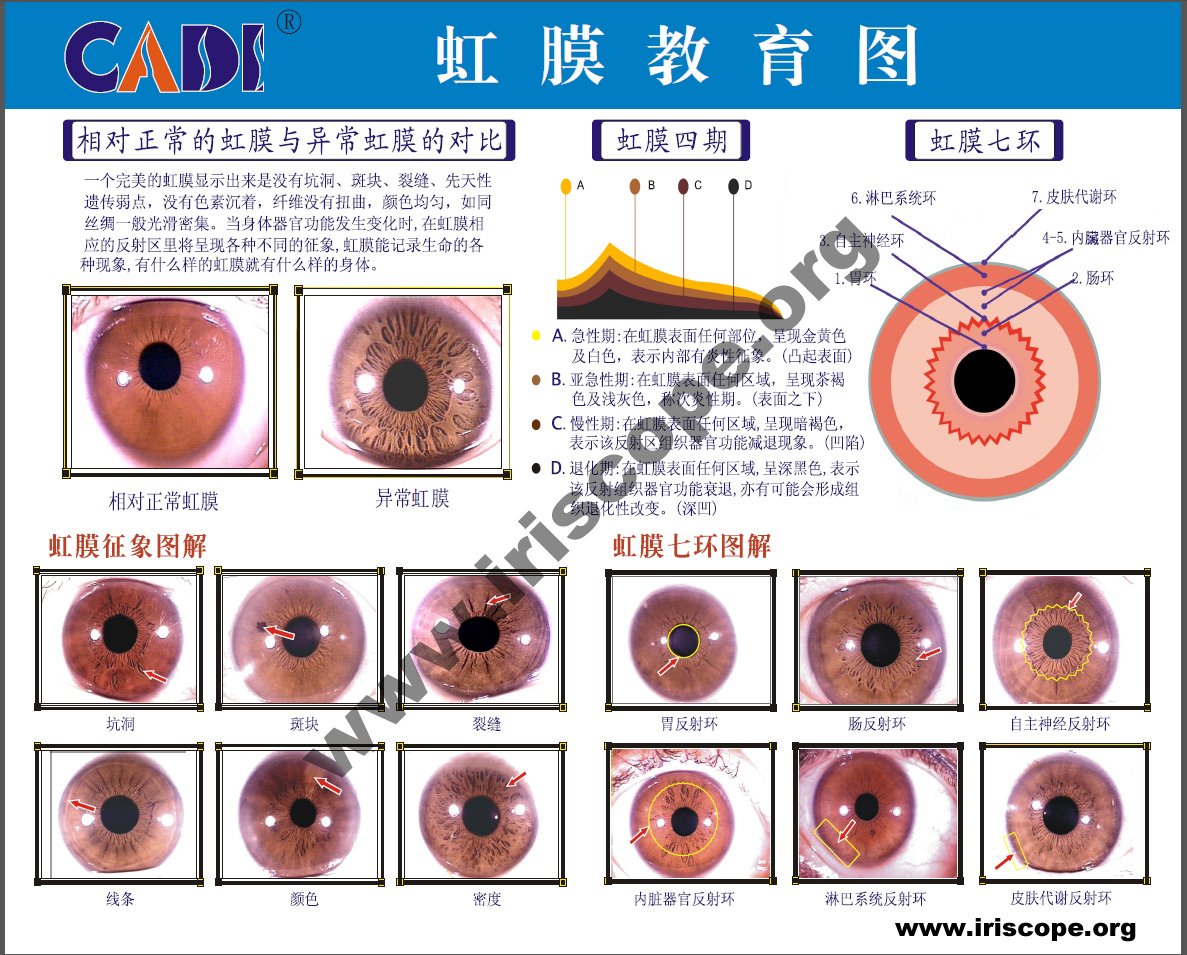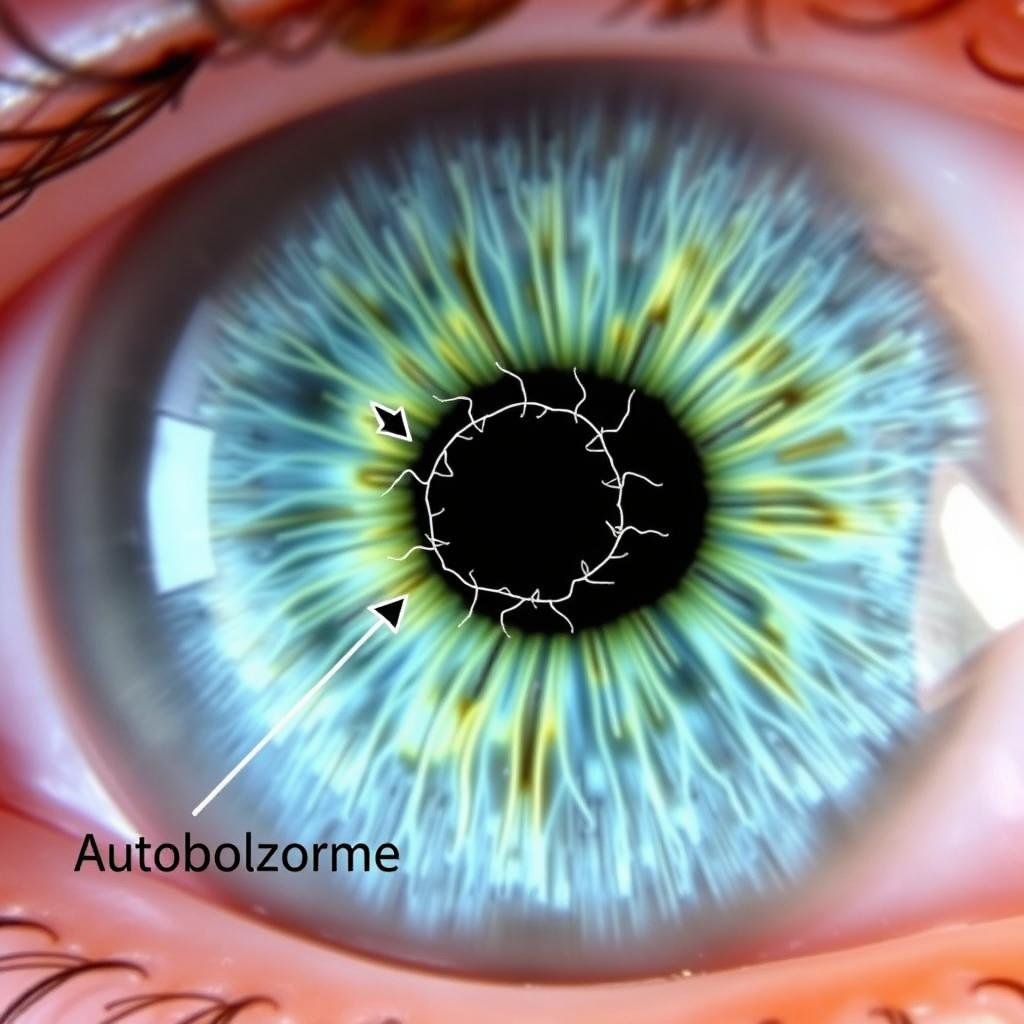Comment le tableau d'iridologie fonctionne pour l'analyse du stress
Un tableau d'iridologie divise l'iris en zones qui correspondent à différents organes et systèmes du corps. Pour le stress et l'analyse du système nerveux, les praticiens se concentrent sur des régions spécifiques qui sont en corrélation avec le cerveau, le système nerveux autonome et les organes sensibles au stress comme les glandes surrénales.
Les zones clés du tableau de l'iridologie liées au stress
Lors de l'examen d'un tableau d'iridologie pour les indicateurs de stress, plusieurs domaines critiques exigent une attention particulière:
Couronne de nerf autonome: Cela apparaît comme un schéma circulaire autour de la pupille et reflète l'état de votre système nerveux autonome. Les irrégularités dans cette zone indiquent souvent des schémas de stress chroniques affectant votre réponse de combat ou de fuite.
Zone surrénale: Situé dans la partie inférieure de l'iris, les changements ici peuvent révéler une fatigue surrénalienne ou une suractivité - conséquences courantes d'un stress prolongé.
Zone cérébrale: La section supérieure de l'iris correspond à la fonction cérébrale. Les marques liées au stress ici peuvent suggérer une fatigue mentale, une anxiété ou des effets cognitifs du stress chronique.
Interpréter les signaux du système nerveux à travers le tableau d'iridologie
Les iridologues analysent des marques spécifiques et des variations de couleurs au sein de ces zones pour évaluer la santé du système nerveux:
- Lignes radiales: Des lignes droites rayonnant de la pupille peuvent indiquer des réponses de stress aigu ou une tension nerveuse.
- Stress anneaux: Les anneaux circulaires autour de l'iris suggèrent souvent des schémas de stress chroniques à long terme qui ont affecté la santé physique.
- Changements de couleur: L'assombrissement dans les zones du système nerveux peut indiquer l'épuisement, tandis que les zones blanches peuvent suggérer une inflammation ou une hyperactivité.
- Lacunes: Ces structures en forme de poche dans l'iris peuvent révéler des faiblesses héréditaires dans des parties spécifiques du système nerveux.

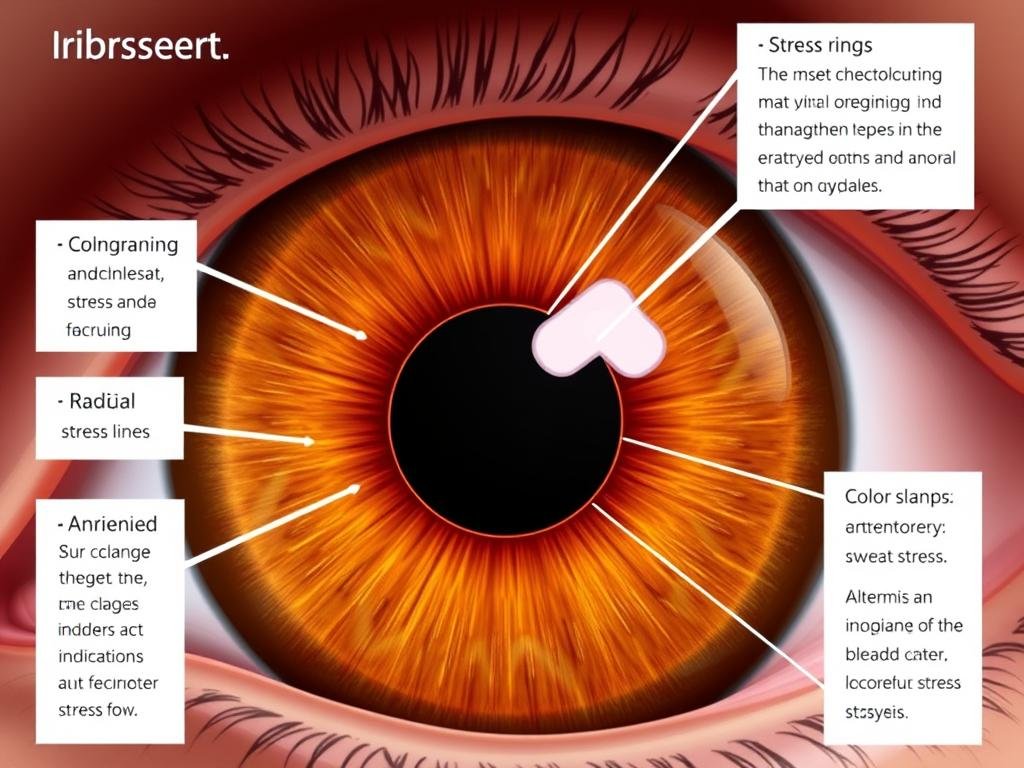
Découvrez votre modèle de stress personnel
Curieux de savoir ce que votre iris révèle sur vos niveaux de stress? Nos iridologues certifiés se spécialisent dans l'analyse du système nerveux et peuvent fournir des informations personnalisées sur vos modèles de stress.
Planifier une consultation
La science derrière le tableau de l'iridologie et la santé du système nerveux
Alors que la médecine traditionnelle maintient une vision sceptique de l'iridologie, les partisans soulignent les riches liens neuronaux entre l'iris et le cerveau comme base physiologique de cette pratique. L'iris contient des milliers de terminaisons nerveuses qui se connectent au cerveau via le nerf optique, ce qui en fait une carte visible de l'activité neurologique.
Corrélations anatomiques dans le tableau d'iridologie
La relation entre les zones d'iris et les systèmes corporels suit les modèles de développement embryologique:
L'iris se développe à partir de la même couche tissulaire embryonnaire (ectoderme) que le système nerveux, expliquant potentiellement pourquoi le stress neurologique peut se manifester dans les modèles d'iris. Selon la théorie de l’iridologie, l’arrangement topographique de l’iris reflète l’organisation du corps, l’iris supérieur correspondant au haut du corps et au cerveau, et l’iris inférieur aux membres inférieurs.
La recherche sur ces connexions reste limitée, bien que certains praticiens documentent les corrélations entre les marques de l'iris et les conditions diagnostiquées. La couronne de nerf autonome, visible comme un modèle circulaire autour de la pupille, est particulièrement significative pour l'analyse du stress car elle correspond directement à la fonction du système nerveux autonome.
Études de cas: Diagnostics du tableau de l'iridologie pour le stress chronique
Bien que anecdotiques, de nombreux praticiens ont documenté des cas où l'analyse de l'iris a révélé des schémas de stress avant les tests conventionnels n'a montré des anomalies:
“Un patient de 42 ans a montré des anneaux de stress prononcés et s'assombrissant dans la zone surrénale des deux iris malgré des taux normaux de cortisol sanguin. Six mois plus tard, elle a développé une fatigue surrénalienne clinique. Les changements d'iris semblaient précéder les changements hormonaux mesurables.”
- Journal of Compmentary Health Practice Review

Il est important de noter que l’analyse des cartes d’iridologie devrait compléter, et non remplacer, le diagnostic médical conventionnel. L'approche la plus équilibrée utilise l'iridologie comme un outil au sein d'une stratégie d'évaluation de la santé complète.
Utilisation du tableau d'iridologie pour la gestion du stress personnalisé
L'application pratique de l'iridologie pour la gestion du stress implique à la fois des techniques d'analyse professionnelle et de conscience de soi. En comprenant vos modèles d'iris uniques, vous pouvez développer des stratégies ciblées pour lutter contre vos vulnérabilités de stress spécifiques.
Analyse étape par étape avec un tableau d'iridologie
Les iridologues professionnels suivent une approche systématique lors de l'analyse des modèles de stress:
- Cartographie initiale: Le praticien photographie à la fois des iris utilisant un équipement spécialisé pour capturer des images haute résolution.
- Comparaison des graphiques: Ces images sont comparées par rapport aux références de diriologie d'Iridology standardisée pour identifier les zones pertinentes.
- Identification du marqueur de stress: Le praticien recherche des indicateurs de contrainte spécifiques comme les lignes radiales, les changements de couleur et les anomalies structurelles.
- Analyse du système: Chaque zone affectée est analysée pour déterminer quels systèmes corporels sont les plus impactés par le stress.
- Reconnaissance des modèles: Le modèle global aide à déterminer si le stress est aigu, chronique ou cyclique.
- Recommandations personnalisées: Sur la base des résultats, des stratégies de gestion du stress ciblées sont développées.

Modèles communs dans le tableau d'iridologie pour l'anxiété & Fatigue
Certains modèles d'iris sont fréquemment en corrélation avec des conditions spécifiques liées au stress:
Motifs d'anxiété
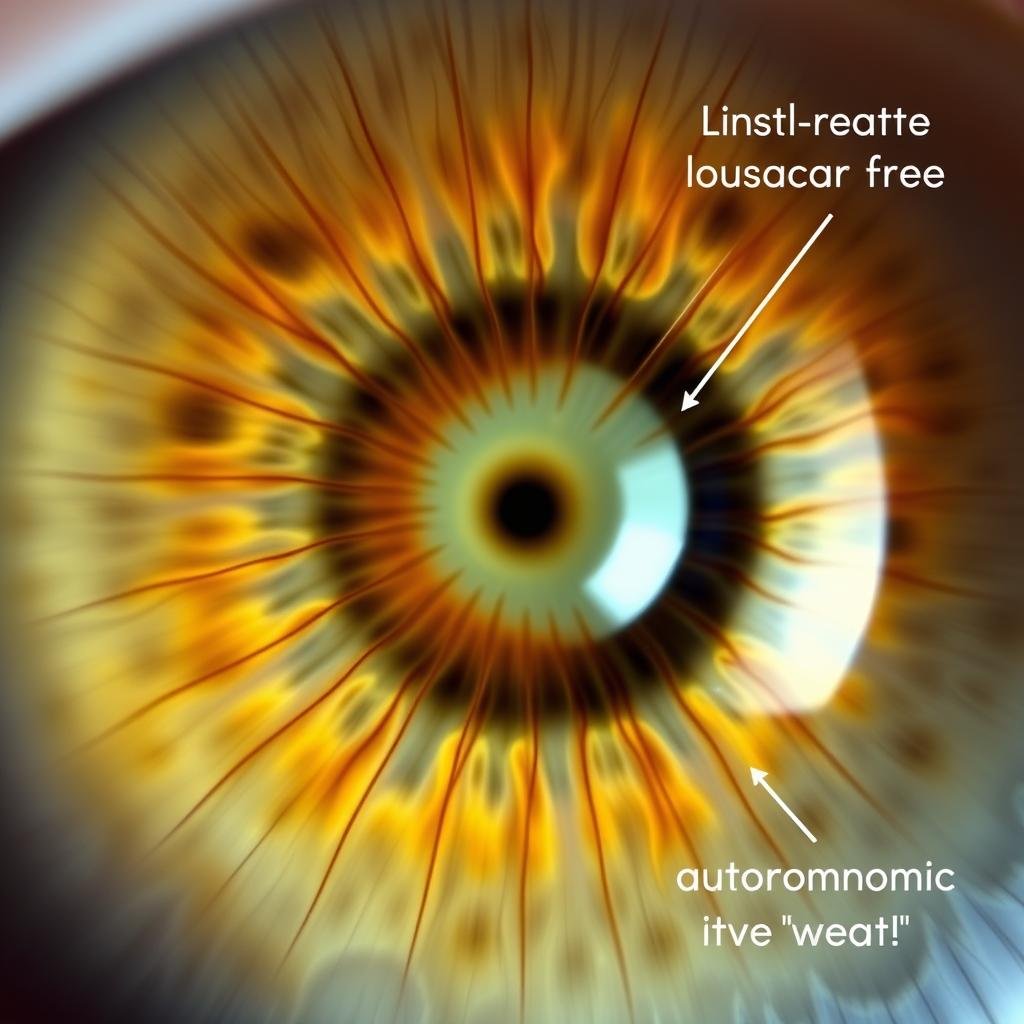
Caractérisé par des lignes radiales étroitement emballées, une couronne nerveuse contractée et souvent une couleur plus claire dans la zone cérébrale. Ces modèles suggèrent un système nerveux hyperactif et des difficultés de relaxation.
Modèles de fatigue surrénale
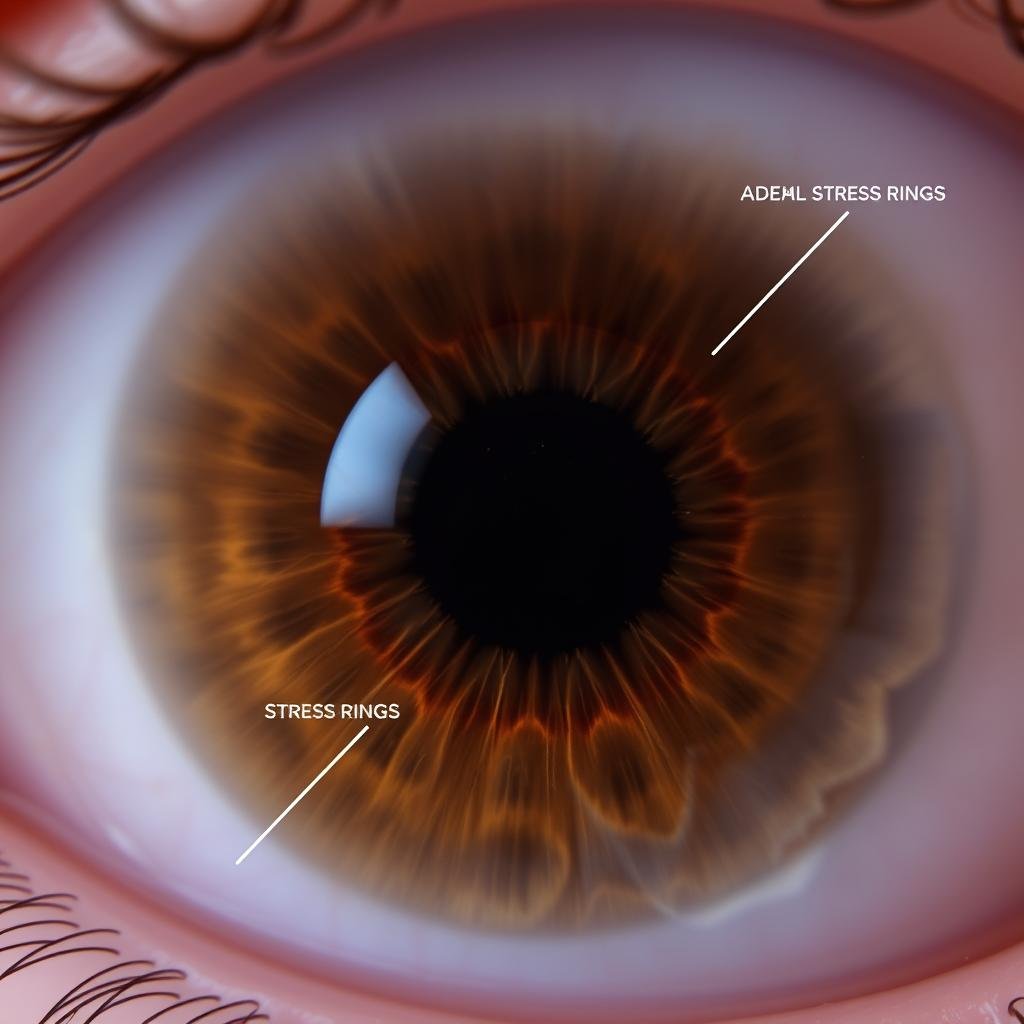
Montre généralement l'assombrissement dans la zone surrénalienne, les anneaux de stress et parfois un “délavé” apparition dans les zones touchées. Ceux-ci suggèrent des réserves d'énergie épuisées par le stress chronique.
Schémas d'épuisement nerveux

Affiche souvent plusieurs anneaux de stress, s'assombrissant dans les zones cérébrales et surrénales et les lacunes possibles (structures en poche) dans la zone de couronne de nerf autonome.
Prêt à comprendre vos modèles de stress?
Nos iridologues certifiés peuvent vous aider à identifier vos signatures de stress uniques et à développer un plan personnalisé pour lutter contre la santé de votre système nerveux.
Réservez votre analyse d'iris
FAQ sur le tableau de l'iridologie et l'analyse du stress
Le graphique de l'iridologie peut-il détecter les dommages au stress à long terme?
Oui, le stress chronique laisse souvent des schémas visibles chez l'iris qui peuvent être identifiés par l'analyse des graphiques iridologiques. Ceux-ci apparaissent généralement comme des anneaux de stress (lignes circulaires autour de l'iris), des changements de couleur dans les zones du système nerveux et des changements structurels dans la couronne nerveuse autonome. Ces marqueurs peuvent indiquer les effets de stress à long terme avant même que les symptômes cliniques n'apparaissent.
Quelle est la précision de l'iridologie pour le diagnostic des conditions liées au stress?
L'iridologie est mieux considérée comme un outil d'évaluation complémentaire plutôt que comme une méthode de diagnostic. Bien qu'il puisse révéler des schémas associés au stress, il ne doit pas remplacer le diagnostic médical conventionnel. Sa plus grande valeur réside dans l'identification des vulnérabilités potentielles et des schémas de stress qui justifient une enquête plus approfondie par le biais de tests médicaux standard.
Les modèles d'iris changent-ils à mesure que les niveaux de stress fluctuent?
L'iris montre quelques changements au fil du temps, bien que ceux-ci se produisent généralement progressivement. Le stress aigu peut ne pas modifier immédiatement les structures de l'iris, mais les schémas de stress chroniques deviennent souvent visibles chez l'iris au cours des mois ou des années. Certains praticiens documentent les changements dans la coloration et la structure de l'iris à mesure que les conditions de santé s'améliorent ou se détériorent.
Puis-je effectuer une analyse de base de l'iris à la maison?
Bien que l'analyse professionnelle soit recommandée pour une évaluation détaillée, vous pouvez observer les fonctionnalités de base de l'iris à la maison avec une bonne source de lumière et un miroir d'agrandissement. Recherchez des anneaux de contrainte évidents (lignes circulaires), des variations de couleur et la clarté de la structure des fibres. Cependant, l'interprétation nécessite une formation et une expérience pour éviter mal les variations normales en tant que problèmes de santé.
En quoi le tableau d'iridologie diffère-t-il pour les yeux gauche et droit?
Dans l'iridologie traditionnelle, l'iris gauche correspond généralement au côté gauche du corps et des fonctions du cerveau droit, tandis que l'iris droit se rapporte au côté droit et aux fonctions du cerveau gauche. Certains praticiens associent également l'œil gauche aux aspects émotionnels et l'œil droit aux aspects physiques de la santé, bien que les approches varient entre les différentes écoles d'iridologie.
Quelles qualifications un iridologue devrait-il avoir?
Recherchez des praticiens ayant une certification d'organisations iridologiques reconnues telles que l'International Iridology Practitioners Association (IIPA) ou la National Iridology Research Association. De nombreux iridologues qualifiés ont également des antécédents dans la naturopathie, la chiropratique ou d'autres disciplines de santé, offrant une approche plus complète de l'évaluation de la santé.
Les iris des enfants peuvent-ils être analysés pour les schémas de stress?
Oui, les iris des enfants peuvent être analysés, bien que leurs modèles puissent être plus clairs et moins complexes que les adultes’ En raison de moins d'impacts de stress accumulés. L'identification précoce des faiblesses constitutionnelles dans le système nerveux peut être précieuse pour les approches de santé préventives, bien que l'analyse devrait être effectuée par les praticiens expérimentés dans l'iridologie pédiatrique.
La couleur des yeux affecte-t-elle l'interprétation des cartes iridologiques?
Oui, la couleur des yeux influence l'interprétation. Les iris bleus et plus clairs montrent généralement des détails structurels plus clairement, ce qui rend certains marqueurs plus faciles à identifier. Les iris bruns et plus foncés nécessitent un examen plus minutieux et parfois un équipement spécialisé pour révéler le même niveau de détail. Les praticiens expérimentés ajustent leurs techniques en fonction de la couleur des yeux.
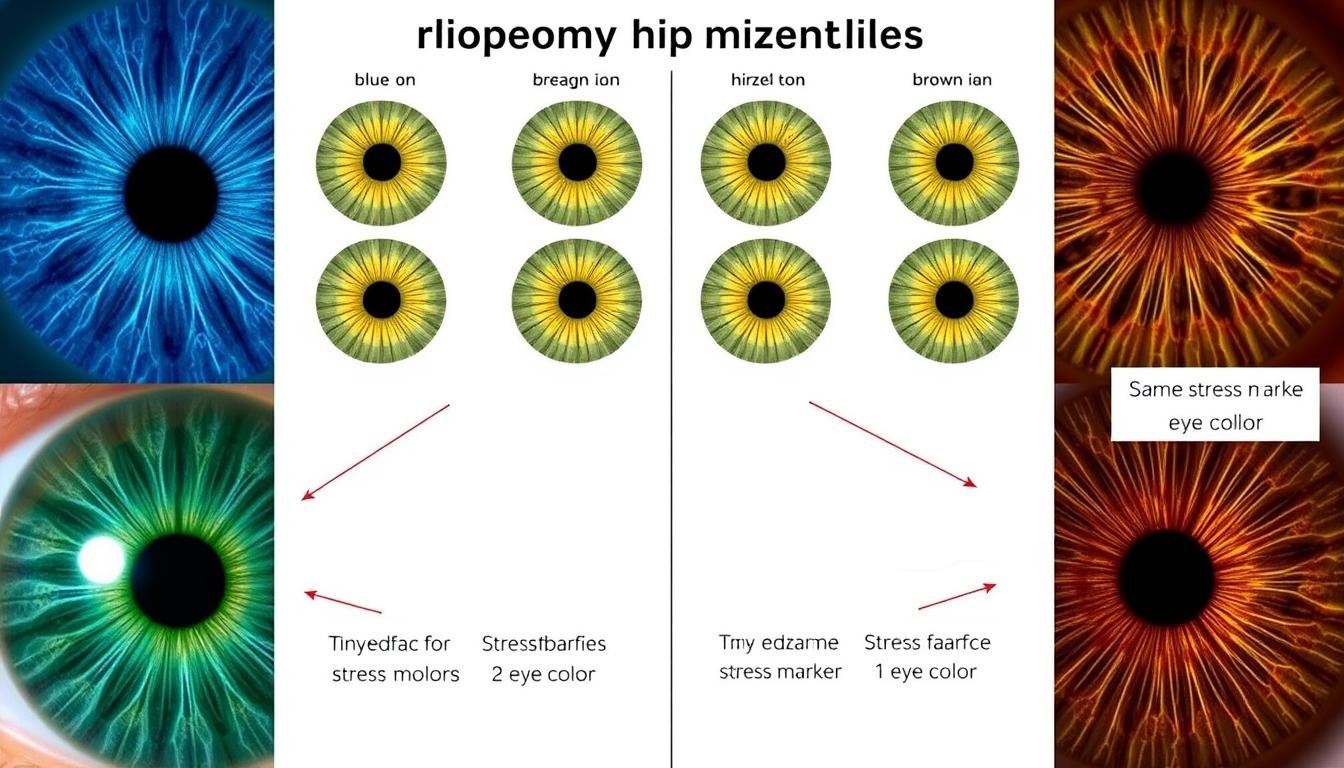
Embrasser les idées de l'iridologie pour la gestion du stress
Le tableau d'iridologie offre une perspective unique sur la façon dont le stress affecte votre système nerveux et votre santé globale. Bien qu'il ne remplace pas les soins médicaux conventionnels, il fournit des informations précieuses qui peuvent guider les stratégies de bien-être personnalisées et une intervention précoce pour les conditions liées au stress.
En comprenant les façons spécifiques du stress se manifeste dans votre corps grâce à l'analyse de l'iris, vous pouvez développer des approches ciblées pour renforcer la résilience et soutenir la santé de votre système nerveux. Que vous ayez affaire au stress chronique, à l'anxiété ou que vous souhaitiez simplement optimiser votre bien-être, l'iridologie offre un autre objectif à travers lequel voir votre parcours de santé.
Faites la prochaine étape de votre voyage de bien-être
Découvrez les avantages de l'analyse de l'iridologie personnalisée pour la santé de votre système nerveux. Nos praticiens certifiés fournissent des évaluations détaillées et des recommandations personnalisées en fonction de vos modèles d'iris uniques.
Planifiez votre analyse complète de l'iris














